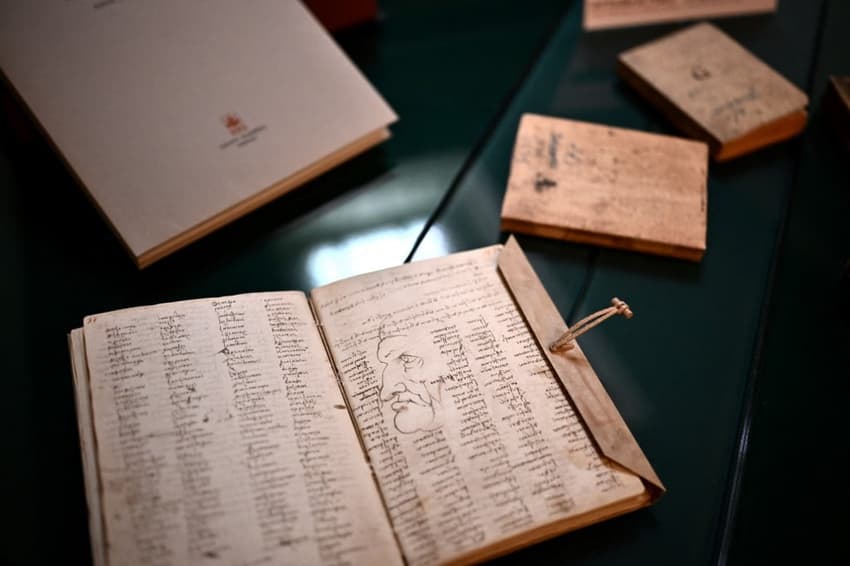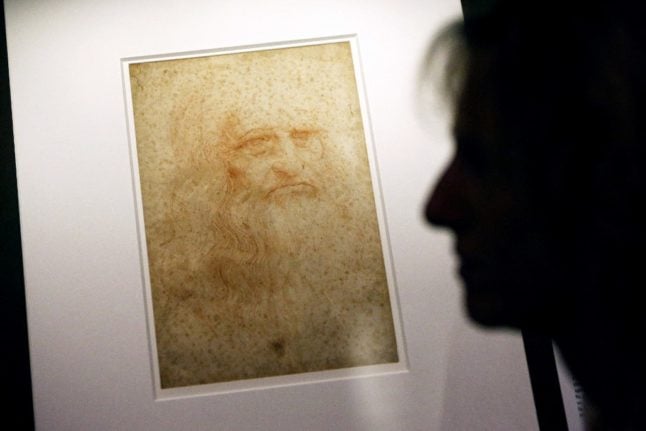New research claims Italy's Leonardo da Vinci was son of a slave

Leonardo da Vinci, the painter of the Mona Lisa and a symbol of the Renaissance, was only half-Italian, his mother a slave from the Caucasus, new research revealed on Tuesday.
Da Vinci's mother had long been thought a Tuscan peasant, but University of Naples professor Carlo Vecce, a specialist in the Old Master, believes the truth is more complicated.
"Leonardo's mother was a Circassian slave... taken from her home in the Caucasus Mountains, sold and resold several times in Constantinople, then Venice, before arriving in Florence," he told AFP at the launch of a new book.
In the Italian city, she met young notary Piero da Vinci "and their son was called Leonardo".
The findings of Vecce, who has spent decades studying da Vinci and curating his works, are based on Florence city archives.
READ ALSO: In the footsteps of genius: A travel guide to Leonardo Da Vinci’s Italy
They have formed the basis of a new novel - "The Smile of Caterina, the mother of Leonardo" -- while also shedding new light on the artist himself.
Any new discovery about da Vinci is hotly contested by the small world of experts who study him, but Vecce insists the evidence is there.
Among the documents he found is one written by da Vinci's father himself, a legal document of emancipation for Caterina, "to recover her freedom and recover her human dignity".

A person stands next to a self-portrait of Leonardo Da Vinci at the Biblioteca Reale in Turin. Photo by Marco BERTORELLO/ AFP.
'Spirit of freedom'
This document is dated 1452, and was presented on Tuesday at a press conference at the headquarters of publishing house Giunti in Florence.
It was written by "the man who loved Caterina when she was still a slave, who gave her this child named Leonardo and (was) also the person who helped to free her", Vecce said.
His assertion offers a radical change of perspective on da Vinci, who was believed to have been the product of an affair between Piero da Vinci and a different woman, young Tuscan peasant Caterina di Meo Lippi.
Born in 1452 in the countryside outside Florence, da Vinci spent his life travelling around Italy before dying in Amboise, France in 1519, at the court of King Francis 1.
Vecce believes the difficult life of his "migrant" mother had an impact on the work of her brilliant son.
READ ALSO: Italian researchers discover 14 descendants of Leonardo Da Vinci living in Tuscany
"Caterina left Leonardo a great legacy, certainly, the spirit of freedom," he said, "which inspires all of his intellectual scientific work".
Da Vinci was a polymath, an artist who mastered several disciplines including sculpture, drawing, music and painting, but also engineering, anatomy, botany and architecture.
"He doesn't let anything stop him," Vecce said.
Some may consider the idea that this epitome of a "Renaissance man" was the product of such a union too good to be true.
But Paolo Galluzzi, a da Vinci historian and member of the prestigious Lincei scientific academy in Rome, said it is "by far the most convincing".
Speaking to AFP, he highlighted the quality of the documents discovered by his colleague, adding that there "must remain a minimum of doubt, because we cannot do a DNA test".
Galluzzi said he was also not surprised.
The period into which da Vinci was born marks "the beginning of modernity, the exchanges between people, cultures and civilisations which gave birth to the modern world", he said.
Comments
See Also
Da Vinci's mother had long been thought a Tuscan peasant, but University of Naples professor Carlo Vecce, a specialist in the Old Master, believes the truth is more complicated.
"Leonardo's mother was a Circassian slave... taken from her home in the Caucasus Mountains, sold and resold several times in Constantinople, then Venice, before arriving in Florence," he told AFP at the launch of a new book.
In the Italian city, she met young notary Piero da Vinci "and their son was called Leonardo".
The findings of Vecce, who has spent decades studying da Vinci and curating his works, are based on Florence city archives.
READ ALSO: In the footsteps of genius: A travel guide to Leonardo Da Vinci’s Italy
They have formed the basis of a new novel - "The Smile of Caterina, the mother of Leonardo" -- while also shedding new light on the artist himself.
Any new discovery about da Vinci is hotly contested by the small world of experts who study him, but Vecce insists the evidence is there.
Among the documents he found is one written by da Vinci's father himself, a legal document of emancipation for Caterina, "to recover her freedom and recover her human dignity".

'Spirit of freedom'
This document is dated 1452, and was presented on Tuesday at a press conference at the headquarters of publishing house Giunti in Florence.
It was written by "the man who loved Caterina when she was still a slave, who gave her this child named Leonardo and (was) also the person who helped to free her", Vecce said.
His assertion offers a radical change of perspective on da Vinci, who was believed to have been the product of an affair between Piero da Vinci and a different woman, young Tuscan peasant Caterina di Meo Lippi.
Born in 1452 in the countryside outside Florence, da Vinci spent his life travelling around Italy before dying in Amboise, France in 1519, at the court of King Francis 1.
Vecce believes the difficult life of his "migrant" mother had an impact on the work of her brilliant son.
READ ALSO: Italian researchers discover 14 descendants of Leonardo Da Vinci living in Tuscany
"Caterina left Leonardo a great legacy, certainly, the spirit of freedom," he said, "which inspires all of his intellectual scientific work".
Da Vinci was a polymath, an artist who mastered several disciplines including sculpture, drawing, music and painting, but also engineering, anatomy, botany and architecture.
"He doesn't let anything stop him," Vecce said.
Some may consider the idea that this epitome of a "Renaissance man" was the product of such a union too good to be true.
But Paolo Galluzzi, a da Vinci historian and member of the prestigious Lincei scientific academy in Rome, said it is "by far the most convincing".
Speaking to AFP, he highlighted the quality of the documents discovered by his colleague, adding that there "must remain a minimum of doubt, because we cannot do a DNA test".
Galluzzi said he was also not surprised.
The period into which da Vinci was born marks "the beginning of modernity, the exchanges between people, cultures and civilisations which gave birth to the modern world", he said.
Join the conversation in our comments section below. Share your own views and experience and if you have a question or suggestion for our journalists then email us at [email protected].
Please keep comments civil, constructive and on topic – and make sure to read our terms of use before getting involved.
Please log in here to leave a comment.